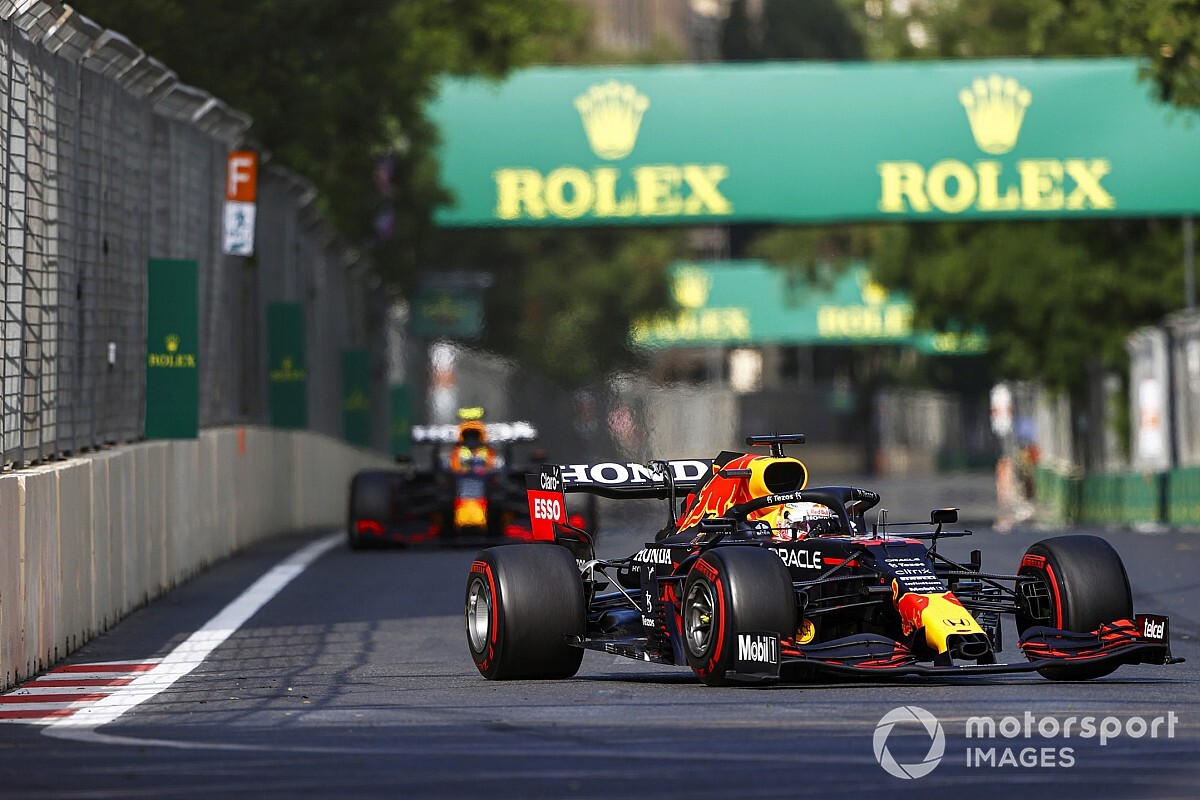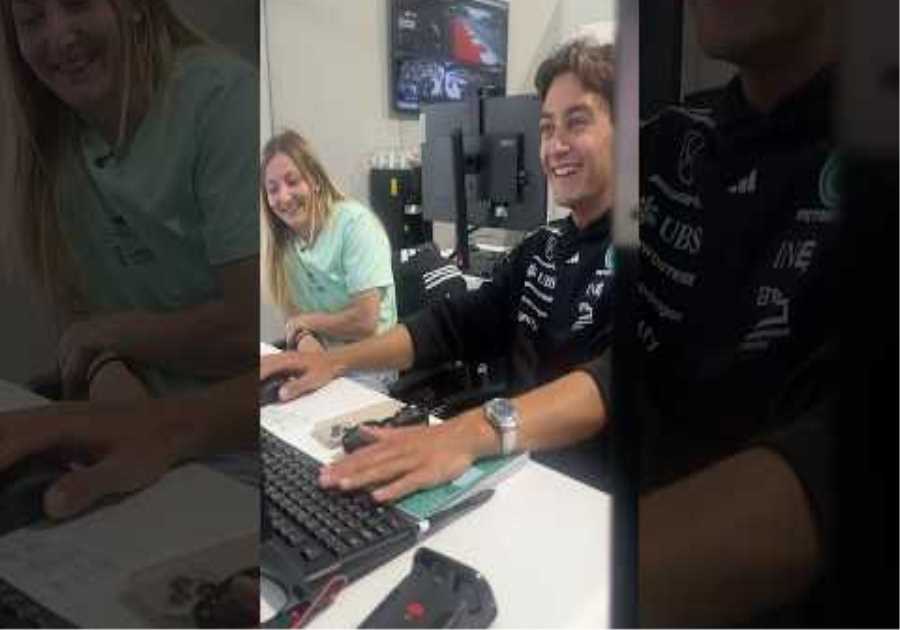
The Formula 1 tire supplier had previously been cryptic when it made a statement claiming that “running conditions” were behind the tire damage suffered by Max Verstappen and Lance Stroll in Baku.
While Pirelli confirmed that both Red Bull and Aston Martin followed the regulations with minimum starting pressure and maximum flat temperature, they say things deviated from expectations when the cars were running.
Pirelli usually sets a starting pressure based on the expectation that the psi will then continue to rise once the tires on the track run out.
However, it appears that the Aston Martin and Red Bull tires did not experience such a pressure increase in Baku and therefore ran at a lower level than Pirelli expected.
Running under the pressure Pirelli expected, it meant the standing waves created by the fast Baku turns were enough to trigger the failure on the inside shoulders of the Verstappen and Stroll’s left rear tires.
Speaking to the media at the French Grand Prix, Pirelli’s F1 and Auto Racing Director Mario Isola confirmed that both teams were running on tires that Pirelli had not expected.
“What happened in Baku is simply that the expected running conditions were different from the actual running conditions – and that led to failure,” he said.
“If a lot of energy flows into the tires and the pressure is lower than expected, the result is what is known as standing waves on the sidewall.
“Standing waves bring a lot of energy to the inner shoulder of the tire. And at some point the tire breaks. That happened and the reason why we had this situation in Baku. “
Isola said the problem wasn’t entirely due to these two teams’ tire pressures, which were below expectations.
Another factor was that Pirelli’s predictions for vehicle performance over the weekend, based on the data provided by the teams, did not match how they actually performed on the track.
“When we prepare the recipes [for minimum pressure], we get the simulations and take the margins into account, ”he said.
“The expected loads, downforce or speed are simulated, so it’s not exactly the value we find on the track. And in this case in Baku we also found some parameters that did not correspond exactly to what we found on the route. “
Max Verstappen, Red Bull Racing, climbs out of his car after falling from the top
Photo by: Steve Etherington / Motorsport Images
He added, “We assume that they run with a certain pressure and fall. And of course, with a certain margin, we are driving in a condition that is OK for the tire.
“In this case, we didn’t achieve these conditions, not because the teams did something against the regulations, but because they looked for performance as usual, and that created a different scenario than we expected. And the other scenario was that mainly the tires were running at a lower pressure than expected. “
Isola said the teams had done nothing against the regulations as there was no minimum running pressure that had to be adhered to.
That will change for next year, however, when teams will have to run with a standard pressure sensor as part of the new rule era of F1.
“Unless the regulation says there is ongoing pressure to be respected, I can’t say that they did something against the regulation in an attempt to improve performance,” continued Isola.
“If you respect the starting pressure, stick to the rule. If the same thing happens next year, if we apply an operating pressure with the standard sensor, then you are violating the regulations. But that is not the case this year. “
Isola said it was no real surprise that the teams were increasing tire pressures as he suggested that the difference between teams in running pressures in Baku was more than a psi.
“Every team is looking for performance,” he said. “They’re here to race, they’re not just here to cruise the track. And that means that when we are looking for performance, we know that you can get some performance with a little less pressure. “
Despite suspicion in recent races that teams are messing around with pressure, Isola said Baku was the first time it was recorded this way.
“We check the running parameters every time we get telemetry from the race,” he said.
“Of course we check everything on all teams and because it is an indication of the following race and its specifications, we use the data.”
The post Red Bull, Aston Martin F1 teams ran with lower pressure first appeared on monter-une-startup.Did you miss our previous article...
https://formulaone.news/aston-martin/how-an-f1-steering-wheel-is-designed-and-torturetested






